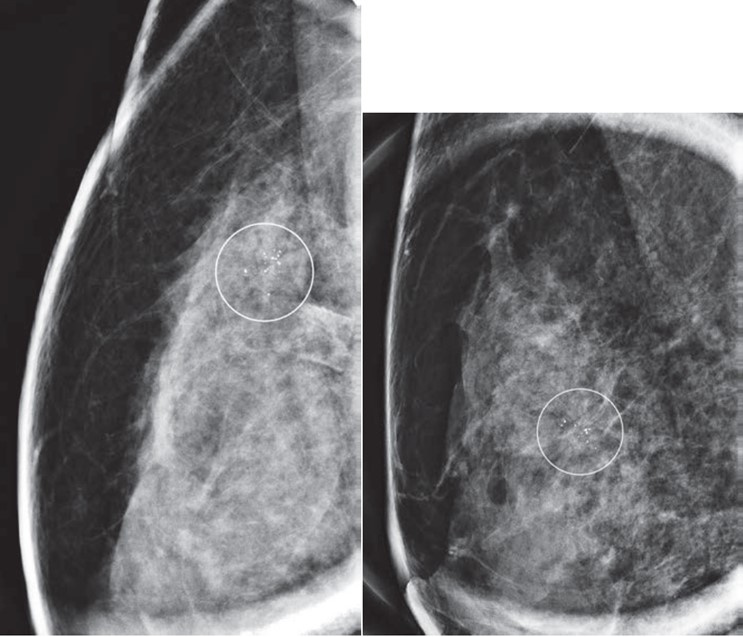Imaging Surveillance, Not Surgery, Is Reasonable for Breast Radial Scars Without Atypia
Images

Patients with screening-detected radial scars without atypia at core-needle biopsy (CNB) have a low upstaging rate to breast cancer of 1.6%, according to a study published in the American Journal of Roentgenology (AJR).
“Imaging surveillance rather than surgery is a reasonable approach for radial scars without atypia, particularly for those presenting as calcifications,” wrote coauthor Manisha Bahl, MD, MPH, from Massachusetts General Hospital in Boston.
First delivered as an oral presentation during the 2023 American Roentgen Ray Society (ARRS) Meeting in Honolulu, HI, Dr Bahl and AJR coauthor Claire Crowley, MB, BCh, BAO, MSc, studied patients who underwent CNB showing radial scar after screening digital breast tomosynthesis (DBT) and digital mammography (DM) (January 1, 2013–December 31, 2020). Patients without surgical excision or at least 2 years of imaging follow-up after CNB were excluded. Rates of upstaging to breast cancer [ductal carcinoma in situ (DCIS) or invasive disease] were compared between radial scars with and without atypia at CNB. Associations of upstaging with patient, imaging, and pathologic variables were explored via statistical testing.
Ultimately, among radial scars detected by screening DBT, the upstaging rate to breast cancer for those without atypia was 1.6% (2/129) and for those with atypia was 20.0% (6/30) (p<.001). Of 34 radial scars presenting as calcifications, none was upstaged to cancer.
The authors, “also identified features other than atypia that are associated with upstaging risk, including age, a prior diagnosis of breast cancer, and a family history of breast cancer.”